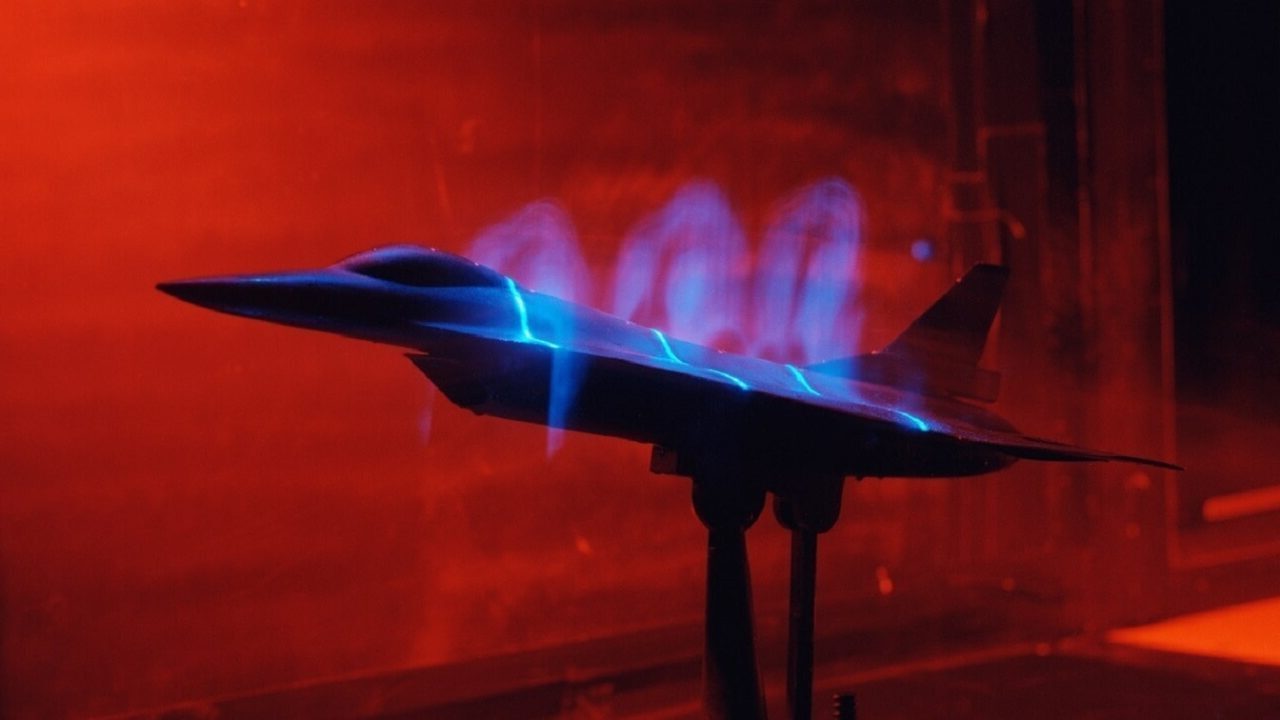Improving on Perfection? Meet The F-16XL – It is all too common today for “XL” to simply be accepted as something that is “extra-large,” and that is a state of America’s dietary choices as much as anything. However, in the case of the General Dynamics F-16 Fighting Falcon – which had already proven to be a highly capable multirole fighter – the XL was meant instead to be something special.
The General Dynamics F-16XL was developed as a contender for the United States Air Force’s Enhanced Tactical Fighter (ETF) program to replace the F-111 Aardvark. It was noted for its radically-modified delta wing shape design that more than doubled the area of a standard F-16 wing. It had begun under the direction of Harry Hillaker – “ Father of the F-16” – as the Supersonic Cruise and Maneuver Prototype (SCAMP), which was designed to highlight how supersonic transport (SST) aerodynamics had a place with military aircraft. A largely theoretical and model-based test study had determined that a cranked arrow wing shape could provide vastly increased lift without any of the limitations that came with a delta wing when paired with an F-15A fuselage.
General Dynamics had invested heavily in the research and development of the delta-winged F-16XL, and it partnered with NASA to test more than 150 different configurations. That included some 3,600 hours in NASA wind tunnels.
Two prototypes were built and these featured a fuselage that was lengthened by 56-inches, while the modified aircraft lacked the ventral fins, which weren’t required due to the delta wing that provided stability characteristics superior to the original F-16. However, despite the fact that the wing was larger and the fuselage length increased, the “XL” was certainly not meant to stand for “extra-large!”
Strike Eagle Beats Out the Fighting Falcon
The F-16XL certainly seemed to have all the merits the Air Force could have wanted, and the two prototype aircraft performed admirably in the Air Force’s tests, which even concluded that the F-16XL could fly twice as far, or carry twice as large a payload, as a normal F-16. Yet in the end, the Air Force opted to go with the McDonnell Douglas F-15E Strike Eagle.
Among the factors cited for the decision was the fact that the F-16XL would have required far more effort, time, and notably more money to put into production – while the Strike Eagle’s two engines meant it had more thrust and the ability to carry more weapons. In addition, that aircraft was capable of supersonic speeds at high or low altitudes, all while carrying its mighty payload, and had no trouble climbing quickly with bombs underwing.
After the ETF contract was awarded to McDonnell Douglas, the two General Dynamics F-16XL prototypes were placed in storage at Edwards Air Force Base (AFB), Mojave, California. That could have been the end of the story for the F-16XL.
But then in 1988, the aircraft was taken out of storage and provided to NASA for further research. After receiving serial numbers #849 and #848, the two prototypes were used in a program designed to evaluate aerodynamics concepts to improve wing airflow during sustained supersonic flight. Both of those aircraft were subsequently used in a variety of experiments that only concluded in 1999.
The two-seat F-16XL was extensively modified by NASA Dryden for the Supersonic Boundary Layer Control research project in the mid-1990s. A turbine-driven suction system installed in the aircraft’s fuselage while a modified, thickened left-wing pulled in boundary layer air flowing over the wing to enable laminar, or smooth, airflow over the wing. The aircraft last flew in 1996 and is reportedly no longer airworthy.
The aircraft was placed again in storage, this time at NASA Dryden; yet in 2007, NASA approached Lockheed Martin – which had acquired General Dynamics’ aviation business – to conduct further tests on the feasibility of returning one of the prototypes to flight status.
That program ended in 2008, and both were retired and returned to storage yet again. Today, one of the two F-16XL prototypes now remains in storage at the Air Force Flight Center Museum at Edwards, while the other is on display at the Museum Air Park – a testament to what could have been for the Fighting Falcon.
Now a Senior Editor for 1945, Peter Suciu is a Michigan-based writer who has contributed to more than four dozen magazines, newspapers and websites. He regularly writes about military hardware, and is the author of several books on military headgear including A Gallery of Military Headdress, which is available on Amazon.com. Peter is also a Contributing Writer for Forbes.

